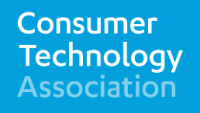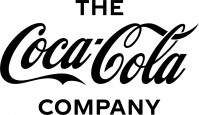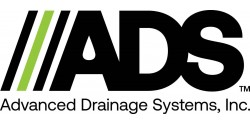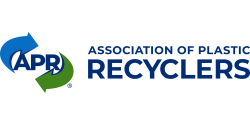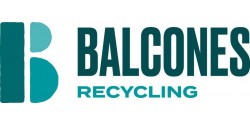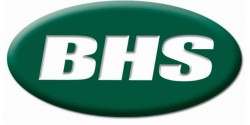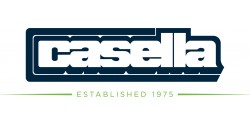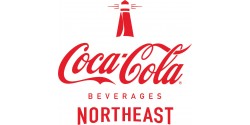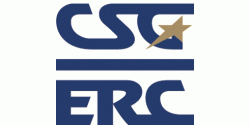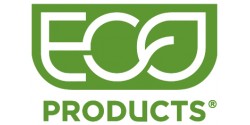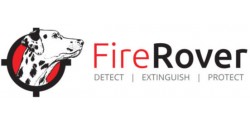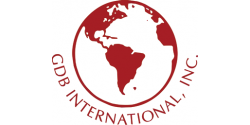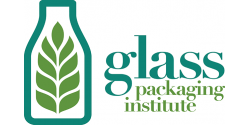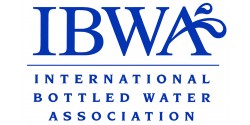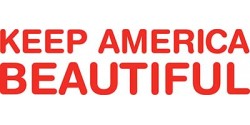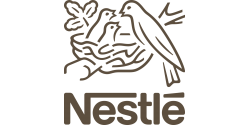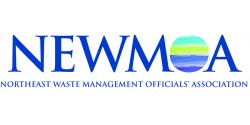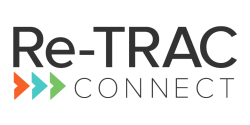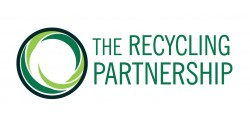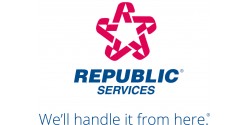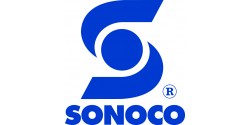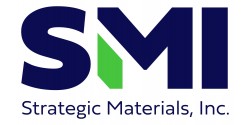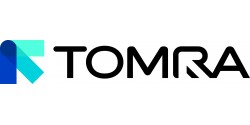June 2015
MEMBERSHIP
Renewing Supporting Member
NERC NEWS
- Save the Date for NERC’s Fall Workshop on Glass Markets—October 26 & 27, 2015
- St. Lawrence County College Move Out Events
- Akwesasne Reuse Swap Meet
- NERC Blog—Have you signed up?
- NERC Blog Worth Repeating—the EPR Debate
- NERC Facilitates Electronics EPR Panel at ISRI Convention
NEWLY POSTED
STATE UPDATES
CONNECTICUT
NEW HAMPSHIRE
ADVISORY MEMBER UPDATES
- Name Change Reflects Expanded Role within the Industry & Announcement of Additional City Partners
- Household Hazardous Waste Collection Results - Centre County Recycling & Refuse Authority
- swissRTec America Announces New Delamination Milling Machine
- Trex Company Honored for Manufacturing ‘Greenest’ Decking
- Dr Pepper Snapple Group & Keep America Beautiful Bring Recycling
to More Public Parks - NYSAR3 Shares in EPA’s Highest Recognition – 2015 Environmental Champion Award
- AF&PA Reports US Paper Recovery Increased in 2014 to 65.4%
NERC’s mission is to promote sustainable materials management by supporting traditional and innovative solid waste best practices, focusing on waste prevention, toxics reduction, reuse, recycling and organics recovery.
State and Advisory Member Updates, as well articles of General Interest and guest blogs are provided as submissions to NERC and may not reflect the policy or position of the Northeast Recycling Council, Inc.
NERC is an equal opportunity provider and employer.
MEMBERSHIPNERC thanks its most recent renewing Supporting Member - the National Center for Electronics Recycling (NCER).
To see a complete listing of NERC's Members and Supporters, as well as the benefits of membership, visit the NERC Advisory Membership web page.
The broad spectrum of interests represented by NERC's Advisory Members, Individual Supporters, and Board Members and their willingness to participate significantly contribute to the unique and important role that NERC plays in recycling in the region.
Member Spotlight - ECOvanta
According to the EPA, electronic waste is the source of up to 70 percent of the heavy metal  in America’s landfills. The environmental issue is only part of the problem. Electronic devices pose a real security risk due to the presence of important proprietary data.
in America’s landfills. The environmental issue is only part of the problem. Electronic devices pose a real security risk due to the presence of important proprietary data.
In response to a growing need for sustainable solutions, Covanta, known worldwide as one of the largest owners and operators of infrastructure for the conversion of waste-to-energy, formed a team of specialists dedicated to the safe, secure recycling of e-waste. ECOvanta, as Covanta’s e-waste recycling division was originally named in 2011 when it first began operation, was born. Since 2013 Covanta Electronic Waste Recycling has been a Sustaining Advisory Member of NERC.
All types of electronic equipment are recycled by Covanta’s electronic waste recycling division. From small household appliances, to large business servers, Covanta Electronic Waste Recycling works with communities, businesses, and organizations to recycle electronics the right way; keeping potentially toxic materials out of the waste streams and out of landfills while recovering valuable commodities for recycling. This reduces greenhouse gas emissions and air pollution, saves energy, and conserves natural resources.
Covanta uses a combination of manual disassembly and an automated shredding system to separate materials into commodities for proper recycling. It works to eradicate the risk for data theft by removing the hard drives and completely shreds all of them in their state of the art shredder line.
Covanta Electronic Waste Recycling obtained e-Stewards, Responsible Recycling (R2), and ISO 14001:2004 certifications for its ECOvanta division after comprehensive accredited third-party audits. The company provides customers absolute and certain destruction of hardware that contains proprietary or sensitive data.
Covanta recycles more than 99 percent of the e-waste it receives and audits all of its downstream recycling partners to make sure they follow the same standards the company does.
The company also forms partnerships with municipalities and counties to establish permanent drop-off points or collection events for electronics and to complete the triangle of how EPR (Extended Producer Responsibility) works between the municipalities and the manufacturers. Laws vary by state so the company pays attention to the detail required to track and audit where the electronics come from and where they go. For instance, some states require brand sorting, so Covanta Electronic Waste Recycling has the capability to sort items by brand.
In 2014, Covanta Electronic Waste Recycling recycled over 14 million pounds of e-scrap. “Everything we take in is recyclable…for reuse or refurbishing. We make a determination on the condition and functionality of the item and then decide whether to send to a company for reuse, or gather the raw materials inside and send off to an end user that will turn them into a new product,” says Gordon Burgoyne, manager of Covanta’s e-waste programs. “We want to make it easy as possible for the customer to recycle their electronics through collection point strategies or some wonderful events in communities.”
NERC Advisory Members have different reasons for joining. Burgoyne explains his: “In 2012, I heard Lynn Rubinstein [NERC Executive Director] speak at a conference. An executive at Covanta introduced me to Lynn, and that’s when I learned about the Northeast Recycling Council and the work they do. I quickly realized that the NERC audience is the same group we focus on with e-waste recycling and e-waste issues. The states represented on the Board are the same states where Covanta Electronic Waste Recycling does business. So it is a good match. I really enjoy the education I gain at the NERC conferences and the networking opportunities are fabulous. We also exhibit at the conferences which gives our company higher visibility in the industry. I have never regretted my decision to join. ”
NERC NEWS
Save the Date for NERC’s Fall Workshop on Glass Markets—October 26 & 27, 2015
NERC’s Fall 2015 Workshop will focus on glass and glass markets and will take place October 26– 27, in Providence, Rhode Island. Be sure to mark your calendar so you don’t miss it. More details about the Workshop agenda and registration will be posted in July on NERC’s website.
Workshop contact: Mary Ann Remolador, NERC’s Assistant Director.
St. Lawrence County College Move Out Events
Waste on college campuses across the country spikes at the end of each academic year sending thousands of reusable or recyclable items to landfills. At the University of New Hampshire, for example, the average 25 tons of trash per month normally generated at the school, jumped to around 125 tons when students moved out.
Like the rest of the nation’s colleges, furniture, TVs, microwaves, other electronics, 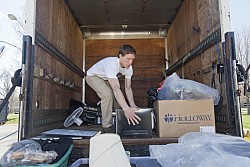 wearable clothes, household goods, and more are found in dumpsters of the four colleges located in St. Lawrence County, New York at the end of the academic year. Last year, Clarkson University spent more than $7,000 for the disposal of these useful goods. And, that cost does not factor in the value that could be gained from these disposed goods, if they were given “another life” through reuse.
wearable clothes, household goods, and more are found in dumpsters of the four colleges located in St. Lawrence County, New York at the end of the academic year. Last year, Clarkson University spent more than $7,000 for the disposal of these useful goods. And, that cost does not factor in the value that could be gained from these disposed goods, if they were given “another life” through reuse.
Clarkson had previously initiated a small, student-led move out initiative. This year, an ad  hoc St. Lawrence County “reuse committee” which includes representatives from the Development Authority of the North Country, St. Lawrence County Solid Waste Operations, St. Lawrence County Environmental Management Council, the Local Living Venture, New York Department of Environmental Conservation (Region 6), and NERC, set out to change this. Working with Susan E. Powers, a professor at Clarkson’s Institute for a Sustainable Environment, along with staff and student members of the Campus Sustainability committee, a campus-wide “Take it Or Leave it” move out event was initiated.
hoc St. Lawrence County “reuse committee” which includes representatives from the Development Authority of the North Country, St. Lawrence County Solid Waste Operations, St. Lawrence County Environmental Management Council, the Local Living Venture, New York Department of Environmental Conservation (Region 6), and NERC, set out to change this. Working with Susan E. Powers, a professor at Clarkson’s Institute for a Sustainable Environment, along with staff and student members of the Campus Sustainability committee, a campus-wide “Take it Or Leave it” move out event was initiated.
The event was part of a St. Lawrence County Move-Out initiative to keep valuable goods in its economy and out of the landfills, by working with three of the area’s four colleges.
 Take it Or Leave it was designed to encourage students to donate unwanted, usable items both for other students who may need clothing and other items, as well as to promote donation to area charities. The event was run from Wednesday through Friday of both Final’s week (4/29-5/1) and Senior Week (5/6 – 5/8).
Take it Or Leave it was designed to encourage students to donate unwanted, usable items both for other students who may need clothing and other items, as well as to promote donation to area charities. The event was run from Wednesday through Friday of both Final’s week (4/29-5/1) and Senior Week (5/6 – 5/8).
“Leave It” drop off locations for useable goods and electronics/CFL/battery recycling were located in each of the housing areas (seven sites in total). Clarkson staff and student volunteers moved the goods daily from housing to the staging area tent located on a grassy area at the Technology Advancement Center, next to a parking lot.
Students were invited to look at collected items on display at the “Take it or Leave it”  tent and take them for reuse at no charge. Remaining materials were moved to collection bins provided by the St. Lawrence County Solid Waste Operations for transport by the Rescue Mission, a nonprofit organization with a network of thrift stores and provider of a range of social services throughout the region.
tent and take them for reuse at no charge. Remaining materials were moved to collection bins provided by the St. Lawrence County Solid Waste Operations for transport by the Rescue Mission, a nonprofit organization with a network of thrift stores and provider of a range of social services throughout the region.
A list of acceptable items was developed by the St. Lawrence reuse committee and provided to the three participating colleges. Acceptable items included:
- Textiles (dry and clean), high quality for thrift stores and donations or low quality for recycle
- Appliances/electronics that are in working order for donation (hair dryers, microwaves, irons, phones, printers, computers) or non-working order for recycling
- Furniture – no broken furniture – no pillows
- Food - Nonperishable, unopened
- New school supplies
- For recycle - CFL light bulbs, batteries and non-working electronics
- Household goods -nothing glass
A video of the Clarkson event was put together by Clarkson University Marketing & External Relations.
NERC staff provided onsite technical assistance for the Clarkson move out event. Two other universities in St. Lawrence County were also provided assistance by the reuse committee—St. Lawrence University and SUNY Potsdam. NERC also worked with the St. Lawrence reuse committee to provide a Reuse Training; the event was attended by 30 people representing municipal staff, schools, libraries, community activists, college staff, and others. NERC’s Reuse Project is funded through a grant from USDA. The goal of the project is to promote reuse programs and events which will continue in the region after NERC’s project ends.
For more information contact Athena Lee Bradley, Projects Manager.
Akwesasne Reuse Swap Meet
Spring cleaning often leads to a pile of stuff you wouldn’t mind getting rid of. A tribal-wide Reuse Swap Meet was held by the St. Regis Mohawk Tribe on Saturday, April 18 in Hogansburg (Akwesasne). The first ever Akwesasne Community Swap Meet was a hit, with an estimated 300 people stopping by to peruse the vendor items.
Through its USDA funded Reuse Project, NERC staff worked with the St. Regis Recycling Coordinator to implement the swap meet as part of the Tribe’s Earth Day events. Vendor participation in the event was free, although a vendor application was required. Vendors also provided their own tables; each vendor was allocated a space of 20 feet by 20 feet. The swap meet event was held indoors and provided an opportunity for tribal members to sell and exchange usable clothing, toys, furniture, household goods, and other items.
A zero waste station was set-up to encourage participants to sort their trash into recyclable and compostable materials. Educational materials and free reusable water bottles, shopping bags, and other items were made available courtesy of the St. Regis Solid Waste Management Program.
A special compost display and workshops were also offered during the event. Demonstration bins constructed from pallets, cinder blocks, and other reusable building materials and found objects were displayed. “How to compost” workshops were offered throughout the day.
Community-wide garage sales or swap meets help the community build pride and character. They give everyone a chance to earn some extra cash for their unwanted items. And, provide opportunity for people to purchase items they may need. Tribal vendors and shoppers were thrilled at the opportunity to have an early indoor swap meet event to get the “garage saleling” season underway and for the chance to bring the Tribal community together.
For more information, contact Athena Lee Bradley, NERC Projects Manager.
NERC Blog—Have you signed up?
blog
bläɡ/
noun: blog; plural noun: blogs
1. a regularly updated website or web page, typically one run by an individual or small group, that is written in an informal or conversational style.
verb
verb: blog; 3rd person present: blogs; past tense: blogged; past participle: blogged; gerund or present participle: blogging
1. add new material to or regularly update a blog.
- write about (an event, situation, topic, etc.) in a blog.
According to Wikipedia, there are now over 250 million blogs in the world. So, why should you be interested in the NERC blog?
The NERC blog touches on the wide world of materials management. Our articles strive to be informative, sometimes witty, sometimes serious, and always timely. Signing up for the NERC blog is easy and best of all, it’s free! Once you’ve signed up, a notice (usually on Tuesdays) will be sent to your email address that a new blog has been posted. Click on the hyperlink in the message and it will take you directly to our most recent blog. Our blogs are rarely over 600 words, typically contain hyperlinks for additional information and of course source material, frequently contain colorful images and photos, and, go well with coffee!
Past NERC blogs are posted on the blog page. Looking for a specific topic? A quick search in the search box on NERC’s home page will allow you to search for any resource, including blogs on the NERC website.
We welcome guest blog postings as well!
For more information, contact Athena Lee Bradley, Projects Manager.
NERC Blog Worth Repeating—the EPR Debate
The EPR Debate was first posted during NERC’s Spring Conference in April.
Extended producer responsibility (EPR) takes center stage today at NERC’s spring conference in Delaware. EPR is a topic sure to bring some heated discussion. I’ve previously posted a couple of guest blogs from Upstream on the topic—To Build a Broader Coalition for EPR in the U.S. Advocates Need to Abandon Some Cherished Ideas and UPSTREAM presents: The Politics of Extended Producer Responsibility: Moving Forward in Hard Times. Both of these address obstacles to expanding extended producer responsibility and recommendations for the path forward.
One presenter at NERC’s conference, Reid Lifset, Research Scholar, Resident Fellow in Industrial Ecology, and Associate Director of the Industrial Environmental Management Program, Yale University, states that EPR “imposes responsibility on producers for the environmental impact of products and materials throughout the product life cycle.” He continues, “Typically, EPR policies are enacted in order to facilitate high levels of recycling by tapping the expertise or financial resources of producer groups.” And, “More fundamentally, EPR attempts to internalize externalities by changing the behavior of producers by tightening the link between product design and marketing decisions and waste management-related concerns.”
There are currently 92 EPR laws in 34 states (including the eight industry-managed container-deposit laws for beverage containers). However, most of these laws were passed prior to 2011. Since then, only 11 EPR laws have been passed, including legislation for paint, mattresses, electronics, and batteries. These more recent implementations were largely built on consumer-fees for financing the laws and enjoyed relatively strong industry support. These days obstacles to expanding EPR include decreasing public interest in environmental issues, the increasing influence of conservative, pro-business, and anti-regulation policy-makers, and opposition by industry.
Call2Recycle and PaintCare, are well known and successful examples of industry-backed product stewardship programs. The Mattress Recycling Council came about after California, Connecticut, and Rhode Island enacted laws requiring the mattress industry to establish a mattress recycling program in their states. Under this legislation, companies selling mattresses and box springs to consumers in these states must collect recycling fees on sales and remit them to the Mattress Recycling Council.
25 states have electronic scrap (“e-scrap”) laws. These laws, passed by state legislators, mandate electronics recycling (the “covered” items vary between states, but most cover televisions, CRT monitors, and computers). All laws except California and Utah use the producer responsibility approach, where the manufacturers must pay for recycling. In California, consumers pay a fee at purchase to cover the eventual recycling of the purchased item. In Utah, manufacturers are required to promote recycling, but not participate in the collection of e-scrap. These laws have proven effective at keeping electronics out of the waste stream.
Advocates promote EPR as helping to divert targeted items from disposal to recycling and/or proper recovery (in the case of toxic materials), as well as serving to reduce public expenditures by allowing the costs of treatment and disposal to be incorporated into the total cost of a product. This point is particularly beneficial for electronics, household hazardous materials, and paint, where disposal costs are typically borne by public entities. And, another important benefit advocated by EPR supporters is the fostering of improvements in product design that promote environmental sustainability.
Ultimately, the goal is for shared responsibility between industry, the consumer, public entities, recycling companies, and other stakeholders.
EPR opponents advocate that market driven motivations suffice to incentivize reductions in toxicity and to promote material use reduction (such as in packaging light-weighting) and product recyclability, etc. Moreover, corporate social responsibility commitments are fostering lifecycle assessments of products and product designs that reduce product impact on the environment.
Who is correct? Do both sides make valid arguments? In today’s environment is it possible to expand EPR? Are the states going to be the driving force, such as in mattresses and electronics? Can organizations such as the Product Stewardship Institute continue to gather stakeholders together to bring about more EPR? What are the drivers to bring industry to the table with more success? There are a lot of opinions on EPR and its related topics…its benefits, costs, role in a capitalist economy, and its role in an ever expanding world economy. The debate will undoubtedly continue…
NERC Facilitates Electronics EPR Panel at ISRI Convention
In April, NERC Executive Director Lynn Rubinstein had the privilege of facilitating a n expert panel on electronics extended producer responsibility at the annual ISRI Convention: Extended Producer Responsibility (“EPR”) - Where is it Going? Panel members, from left to right were: Larry R. Schillinger, ISRI New York and Empire Chapters; Walter Alcorn, Consumer Electronics Association; Resa Dimino, Product Stewardship Institute; Jade Lee, Supply-Chain Services, Inc.; and Lynn Rubinstein, NERC.
n expert panel on electronics extended producer responsibility at the annual ISRI Convention: Extended Producer Responsibility (“EPR”) - Where is it Going? Panel members, from left to right were: Larry R. Schillinger, ISRI New York and Empire Chapters; Walter Alcorn, Consumer Electronics Association; Resa Dimino, Product Stewardship Institute; Jade Lee, Supply-Chain Services, Inc.; and Lynn Rubinstein, NERC.
For more information, contact Lynn Rubinstein.
NEWLY POSTED
Minutes from NERC April Board Meeting
Minutes from the Board of Directors meeting held in Wilmington, Delaware in April 2015 are now available. For more information, contact Lynn Rubinstein, Executive Director.
STATE UPDATES
CONNECTICUT
Now available: Municipal and Regional Recycling Grants!
The Connecticut Department of Energy and Environmental Protection is pleased to announce funding opportunities for municipalities and regions to reduce solid waste disposal costs through increased recycling and source reduction.
There are three funding categories with various award levels: Recycling Rewards compensate municipalities for outstanding waste reduction and recycling programs (awards ranging between $2,000 and $25,000); Unit-Based Pricing (UBP) Program grants for municipalities or regional entities implementing a new or expanding an existing program (awards up to $50,000); and Waste Reduction Initiatives grants for municipalities and regional entities seeking to improve waste reduction and recycling programs (awards up to $20,000). Funds received from all three categories may be used for an array of waste reduction and recycling activities. The deadline for the Recycling Rewards applications is June 29, 2015. The deadline for the UBP Program and Waste Reduction Initiatives grants is ongoing and grants will be awarded on a first-come first-serve basis for as long as funds are available.
Visit DEEP’s Municipal Recycling Resource Center or contact Jennifer Weymouth for more information on the grants.
NEW HAMPSHIRE
EPA Honors Two New Hampshire Men for Lifetime Achievements
Each year since 1970, EPA New England recognizes individuals and groups in the six New  England states who have worked to protect or improve the region’s environment in distinct ways. The Environmental Merit Awards honor individuals and groups who have shown particular ingenuity and commitment in their efforts. In addition to the various categories that recognize individuals, businesses, government, academia and nonprofit organizations, EPA presents lifetime achievement awards for individuals.
England states who have worked to protect or improve the region’s environment in distinct ways. The Environmental Merit Awards honor individuals and groups who have shown particular ingenuity and commitment in their efforts. In addition to the various categories that recognize individuals, businesses, government, academia and nonprofit organizations, EPA presents lifetime achievement awards for individuals.
Pamela Hoyt-Denison (DES); Jeff Kantor and his wife Evelyn, unidentified EPA official; Bob Phelps’ wife, Carol, son Zac, daughter Kelly and grandson Eric, Curt Spalding (EPA Region I Administrator), unidentified EPA official.
This year, a Lifetime Achievement Award went to the Team of Jeff Kantor and Bob Phelps (posthumous) of the Auto & Truck Recyclers Association of New Hampshire. Jeff Kantor and Bob Phelps were instrumental in assisting NHDES in establishing the award-winning Green Yards Program, which promotes and recognizes environmental excellence among auto recycling yards, and educated their peers on the advantages of running a facility that implements environmentally sound and sustainable business practices. Kantor is currently an environmental consultant for LKQ Car World in Candia, NH and has served on many governmental committees. Phelps served as the regional director at-large and a global ambassador for the Automotive Recyclers Association. Phelps passed away in 2014.
As individuals, Kantor and Phelps demonstrated a commitment to promoting good environmental business practices within the auto recycling industry, and as a team they were a powerhouse dedicated to fostering and encouraging a collaborative working relationship between the auto recycling industry and all levels of government. These two men worked tirelessly with the NH Legislature and the United States Congress to promote legislation reflecting the modernization of the auto recycling industry and its importance to our nation.
Kantor and Phelps worked to improve public perception of the industry through community outreach and an increased understanding of the industry. Both men distinguished themselves as community leaders committed to the idea of dynamic partnerships and collaboration. Kantor is the outgoing “front man” who helps people understand the importance of implementing good environmental practices. He invited students to come into his business and conducted “show and tell” productions at local schools to demonstrate how a well-run motor vehicle recycling facility plays an integral part in environmental protection. Now retired from the business, he continues to guide and support the efforts of his successors to instill a commitment to the environment within the industry. Phelps led with quiet distinction. He would spend one-on-one time talking about his views on rules, regulations and the state of the industry. Before his death in 2014, he mentored young people, showing them that an environmentally sustainable business can thrive in today’s society.
Phelps and Kantor spent their careers working to elevate an industry that is neither glamorous nor especially lucrative, but is vitally important to the sustainability of our society. Their commitment to substantive improvements of environmental performance within the automotive recycling industry is their legacy.
ADVISORY MEMBER UPDATES
Name Change Reflects Expanded Role within the Industry & Announcement of Additional City Partners
Curbside Value Partnership (CVP), a national recycling nonprofit formed in 2003, has officially changed its name to The Recycling Partnership. The change reflects the organization’s expanding role within the industry and reduces confusion between the organization and its grant and technical assistance project, The Recycling Partnership. “CVP has worked hard for more than a decade to build trust with communities across the country. The Board of Directors is very proud of our organization’s longstanding commitment to measurably improving recycling rates. The additional of The Recycling Partnership to CVP last July was a natural fit to our evolving approach; this name change further echoes our organizational growth and systems-based approach developed over the past 12 months," says Megan Daum, The Recycling Partnership Board of Directors Chairman and Vice President of Sustainability at the Can Manufacturer’s Institute.
Over the past year, CVP has more than doubled its member organizations and budget, while refining its approach of identify industry-wide barriers to recycling success and then designing educational and technical resources to overcome those barriers in as many communities as possible nationwide. Current important recycling trends include best practices to improve material quality and reduce contamination as well as fostering increased curbside access through the adoption of recycling roll carts.
In addition to the name change, The Recycling Partnership is pleased to announce its next round of partner communities, including Cleveland, Ohio, Charlotte, North Carolina, and Blacksburg, Virginia. "It's incredibly rewarding to see our model successfully growing to reach six current community partners with more announcements coming later this year." Says Recycling Partnership Executive Director, Keefe Harrison. "More than ever, our industry needs support developing not just more supply, but more high quality supply. Our excellent community partners are to be commended for their efforts."
Efforts in the coming months will revolve around community outreach materials and best management practice assistance. Cleveland will release educational resources that raise awareness of the convenience and ease of recycling at home. The City’s goal is to increase their recycling participation rate while focusing on how simple it is to make sure the right materials are recycled the right way. The Charlotte and Blacksburg programs will raise awareness and excitement around recycling roll carts. The Town of Blacksburg is delivering carts to all serviced households at the end of June and beginning of July. The City of Charlotte is providing roll carts to the remaining serviced households that are still using bins; after the roll out is complete in July the entire city will have access to recycling via carts.
Both Charlotte and Blacksburg are utilizing The Recycling Partnership's comprehensive Community Access = Recycling Tonnage (CART) resource module developed to support the switch from bins to carts. “Recycling education and operations are critical sides of the same coin,” says Recycling Partnership Technical Assistance Lead, Cody Marshall. “The Recycling Partnership recognizes that building on operational lessons learned and best practices, and designing educational resources around trends then adopting them for individual communities, we can work effectively across the US, both within our grant program and outside of it, to drive increased quality material recovery.”
Household Hazardous Waste Collection Results - Centre County Recycling & Refuse Authority
Folks from 1070 households took advantage of Centre County’s Household Hazardous Waste Collection Program this weekend at the Centre County Recycling & Refuse Authority.
Approximately 57,000 pounds of material was collected during the 2-day event. In all, 964 vehicles brought hazardous chemicals from 1070 households. Residents from 33 of the county’s 35 municipalities participated. There were several dozen people from seven surrounding counties and as far away as Erie County that came to participate. One person made the trek to the collection on a bicycle.
In addition to the pesticides and other household hazardous waste, over one mile of linear feet of fluorescent tubes was accepted for recycling.
In addition to CCRRA employees, volunteers from Penn State Environmental Health and Safety and the Pennsylvania Department of Agriculture were on-site to assist in checking vehicles.
The event was co-sponsored by Centre County Recycling & Refuse Authority, the Pennsylvania Department of Environmental Protection (DEP) and the Pennsylvania Department of Agriculture. MXI of Virginia was the successful contractor.
“Centre County residents showed up in force and really showed their environmental caring.” said Joanne Shafer, Centre County’s Deputy Executive Director/Recycling Coordinator. “The amount of participants was up considerably; I think that folks are really more aware of their environment and they want to protect the beauty of our county. Clean air and water are key to the economy of our area.” “Many county residents were aware of their carbon footprint and combined trips and helped neighbors”
Collection and disposal costs of all 57,000 pounds will be split between the Household Hazardous Waste Fund, DEP & CHEMSWEEP. We even collected over 1000 pounds of cardboard during the event.
If you missed this collection, look for information next spring. The Centre County Recycling & Refuse Authority will be holding another Household Hazardous Waste Collection Event in 2016.
swissRTec America Announces New Delamination Milling Machine
swissRTec, a company specializing in recycling technology, has announced the production of its largest delamination mill to date. Based in Kensington, NH, swissRTec America, Inc. is a wholly-owned subsidiary of swissRTec International of Switzerland. The company sells technology and mechanical systems to the recycling industry on an international scale, and as of 2014, has expanded sales to the North American market. They are a leader in designing, building and commissioning turn-key e-waste, scrap metal and ASR (automotive shredder residue) recycling facilities.
 swissRTec’s core focus is the shredding, delamination, separation and recovery of high yield and quality valuable raw material from composite waste streams such as waste electrical and electronic equipment (WEEE), cables, printed circuit boards, mixed scrap metal, aluminum composites and other items. The company is renowned for the development of its industry-leading delamination mill, an “impact mill” which uses thousands of collisions to break down pre-shredded composite materials, isolate various components then mill them into tiny, smooth balls which are easily separated.
swissRTec’s core focus is the shredding, delamination, separation and recovery of high yield and quality valuable raw material from composite waste streams such as waste electrical and electronic equipment (WEEE), cables, printed circuit boards, mixed scrap metal, aluminum composites and other items. The company is renowned for the development of its industry-leading delamination mill, an “impact mill” which uses thousands of collisions to break down pre-shredded composite materials, isolate various components then mill them into tiny, smooth balls which are easily separated.
Now, swissRTec has built the largest mill in company history, the CCM20RT. Boasting a six-and-a-half-foot rotor diameter with a weight of 21 tons and up to 840- horsepower drive, this new delamination mill is a dominant force in the swissRTec warehouse. More than a decade of experience has gone into designing and building the mill, along with the companion systems for complete milling and separation.
“The new mill was produced to meet the growing trend in the marketplace for larger recycling systems,” says Bernhard Mueggler, president and CEO of swissRTec America, Inc. “The machine is also needed because of growing demand within the auto shredder residue sector for a high capacity mill capable of producing unrivaled liberation and ball-shaping of metals alongside a machine which is rugged enough to withstand the rigors of ASR processing.”
Mueggler notes that metals are one of the first materials to turn to when looking to increase recovery rates of recyclable materials from ASR. The metals typically left behind in ASR are those which are most difficult to separate. These metals are of a significant value with a high copper content, thus recovering the metal fractions is an attractive prospect for recyclers.
The CCM2ORT, as well as swissRTec’s smaller delamination mills, the CCM10 and CCM15, will be equipped with new, high-efficiency drive systems. These systems will not only increase the efficiency of the delamination mills by 5 to 7 percent, but operators will also benefit from the lower energy cost, seeing at least a 5 percent reduction. With many mills running in three shifts at a rate of more than 4,500 hours per year, the productivity increase and cost savings are substantial.
The swissRTec SRT2 system, which incorporates the delamination mill and separation system is in operation in numerous ASR plants worldwide. The system allows a mixed composite material to be inputted and through the frictional forces applied in the delamination mill, the metals are delaminated and ball-shaped. Through subsequent screening and density separation steps, the valuable metals can be recovered.
To learn more about swissRTec America systems, please visit www.swissRTec.com or call (603) 453-3440.
Trex Company Honored for Manufacturing 'Greenest' Decking
This awards season, Trex is raking in the platinum, gold – and green. Trex Company, the  world’s largest manufacturer of wood-alternative decking and railing, recently took top honors in the decking products category of the Green Builder Media 2015 Reader’s Choice Awards, for the fourth year running. More than 34 percent of readers who voted selected Trex® decking as the “greenest” in the industry.
world’s largest manufacturer of wood-alternative decking and railing, recently took top honors in the decking products category of the Green Builder Media 2015 Reader’s Choice Awards, for the fourth year running. More than 34 percent of readers who voted selected Trex® decking as the “greenest” in the industry.
This is the latest recognition in a bevy of honors Trex already has received from industry professionals this year. Recently, Trex captured three 2015 ADEX Platinum and three ADEX Gold Awards from architects and designers for its high-performance outdoor living products. The company also swept the Builder 2015 Brand Use Study, in which Trex was ranked by building professionals as the brand of choice in all four categories for composite decking, including quality and brand used most often.
“It is always rewarding to have our products and work recognized by our valued pro partners and industry experts, but these latest awards are particularly meaningful as each reflects a core Trex value,” said Ronald W. Kaplan, chairman, president and CEO of Trex. “Our unprecedented sweep of the Builder Brand Use Study is a clear indication that contractors and building pros value the durability and high-performance of Trex materials, while the ADEX Awards reflect our commitment to beautifully designed outdoor living products. However, this latest recognition by Green Builder Media speaks to the heart of Trex – our commitment to leveraging recycled materials.”
Built on eco-friendly principles and values, Trex products offer a truly environmentally responsible choice to consumers. As the largest polyethylene plastic recycler in the United States, Trex annually turns more than 1.5 billion recycled plastic bags – as well as other household plastics like newspaper sleeves and sandwich bags – into eco-friendly outdoor living products. In addition, Trex salvages and keeps more than 400 million pounds of plastic and wood scrap out of landfills each year.
The entire high-performance Trex decking portfolio – including Trex Transcend®, Trex Enhance® and Trex Select® – is manufactured from more than 95 percent recycled and reclaimed materials, an achievement confirmed through the International Code Council Evaluation Service® (ICC-ES) SAVE Verification for Recycled Content*. In fact, Trex was the first company in the wood-alternative decking category to receive such distinction.
On a community level, Trex is an advocate of recycling initiatives and environmental education. The company’s Plastic Film Challenge encourages grade schools to collect plastic bags in return for benches and birdhouses made of Trex wood-alternative materials.
“Being recognized as the ‘green’ leader in the industry proves that our customers understand the importance of environmentally-conscious building and appreciate how Trex manufactures its high-performance products – a fact that’s also confirmed by Trex’s record-breaking sales,” Kaplan said. “As we approach the 2015 outdoor living season, Trex looks forward to elevating the entire outdoor living category with a product portfolio that offers an unmatched combination of eco-friendliness, high-performance and aesthetics.”
The March issue of Green Builder magazine included comprehensive data from the 2015 Reader’s Choice Awards. Green Builder Media is the leading North American company in the residential building industry focused on green building and responsible growth. It provides information that inspires a commitment to sustainable living.
Dr Pepper Snapple Group & Keep America Beautiful Bring Recycling to More Public Parks
As Americans head outdoors this summer, they will find even more convenient opportunities to recycle their cans and bottles at parks across the nation as a result of more than 900 new recycling bins provided by Keep America Beautiful and Dr Pepper Snapple Group (NYSE: DPS).
Now in its third year, the Dr Pepper Snapple Group /Keep America Beautiful Park Recycling Bin Grant program has awarded more than 2,500 recycling bins to local governments and community organizations across 33 states to expand the availability of recycling in a variety of park settings, including neighborhood and larger regional parks, beaches, athletic fields and walking trails.
“We’re pleased to see the momentum of our recycling bin grant partnership with Keep America Beautiful continue to build in its third year,” said Vicki Draughn, vice president of corporate affairs for Dr Pepper Snapple. “Efforts like these are helping make recycling more convenient in our communities, reducing the waste going to landfills and making our public spaces cleaner and more enjoyable for everyone. It’s a win-win.”
For a full list of community organizations receiving grants, visit irecycleonthego.wordpress.com.
“We’re excited to again partner with Dr Pepper Snapple to award these grants,” said Brenda Pulley, senior vice president, recycling, Keep America Beautiful. “With lack of convenience being one of the biggest obstacles to recycling, the bins we’re providing will have a direct impact to increase recycling in these communities.”
For more information about Trex’s green and high-performance products, visit trex.com.
NYSAR3 Shares in EPA's Highest Recognition - 2015 Environmental Champion Award
NYSAR3 and our ‘Re-Clothe NY’ Textile Recovery Campaign partners, the Secondary Materials and Recycled Textiles Association (SMART), and the Council for Textile Recycling (CTR) received a U.S. EPA 2015 Environmental Champion Award on April 24th at EPA Region 2 Headquarters in NYC.

Re-Clothe NY Textile Recovery Campaign reps accept 2015 Environmental Champion Awards at EPA Region 2 Headquarters April 24. From right to left: ‘Re-Clothe NY’ Campaign Chairman Dan Rain; NYSAR3 Board member and Textile Committee Chairwoman Melissa Young; Council for Textile Recovery (CTR) Chairman Eric Stubin; and Secondary Materials and Recycled Textiles Association (SMART) Board member Nir Katz. (photo by Kristen Lilkas).
The Environmental Champion Awards are the “highest recognition presented to the public by EPA,” and given in recognition of “those who have demonstrated an outstanding commitment to protecting and enhancing environmental quality and public health,” according EPA Regional Administrator Judith Enck.
“The EPA Award is a huge honor for the Re-Clothe NY campaign, including all the municipalities that have participated, and our campaign partners from the private and not-for-profit sector. I’m grateful for all of the Textile Committee members who have worked hard to help accomplish this milestone, and very proud to be a part of the textile team!” said Dan Rain, ‘Re-Clothe NY’ Chairman.
“The partnership between NYSAR3, SMART and CTR is an effective model of how the public and private sectors, along with not-for-profit entities, can collaborate to create statewide change,” said Jim Gilbert, NYSAR3 president.
“As a result of ‘Re-Clothe NY,’ residents throughout New York have a heightened awareness of the need to keep textiles out of the trash in order to support jobs and minimize disposal impacts. This award recognizes the environmental leadership of NYSAR3 members across the state and celebrates their efforts to help residents, schools and businesses in their local communities reduce waste and conserve precious natural resources,” Gilbert added.
The initial launch collected more than 100,000 pounds of textiles in municipalities across New York on America Recycles Day in November 2014, and the numbers continue to increase as special events and local efforts continue through Earth Day and beyond.
The campaign produced an innovative set of public communication tools, including a website with a searchable database of textile drop off locations, a media relations tool kit, and social media platforms. Recycling coordinators from across the state are using these tools to educate local residents about their role in preventing over one billion pounds of post-consumer textile materials, with a market value of over $200 million, from ending up in the trash each year. This unprecedented campaign generated statewide awareness of the need to recycle textiles, with traditional and digital media attention reaching more than 4,000 media outlets.
“We believe this collaboration with NYSAR3 and CTR has produced a template that can be used by any state in the country seeking to launch an effort to raise awareness about textile reuse and recovery,” said Jackie King, SMART executive director. “No other state in the nation has undertaken such an extensive campaign to focus on this material and develop resources to provide a turn-key template for any state, municipality or town to raise awareness and increase diversion of this valuable and untapped reuse and recycling resource. We strongly urge other states to take a look and use this effort as a model.”
For more information about statewide textile recycling, visit www.nytextiles.org.
AF&PA Reports US Paper Recovery Increased in 2014 to 65.4%
The American Forest & Paper Association (AF&PA) has announced that 65.4 percent of paper consumed in the U.S. was recovered for recycling in 2014.
Total U.S. paper recovery rose by 2.1 percent in 2014, with domestic mill consumption advancing 1.9 percent to 30.5 million tons and net exports expanding 1.5 percent to 20.2 million tons. There are also some domestic uses of recovered paper outside the paper industry, including as base materials for insulation and molded pulp products.
“U.S. paper recovery’s ongoing success is possible thanks to the voluntary, market-driven product recovery system,” said AF&PA President and CEO Donna Harman. “Industry education programs and initiatives, and the millions of Americans who recycle every day help ensure continuously high paper recovery rates,” said AF&PA Board Chairman and Sappi North America President and CEO Mark Gardner.
The annual paper recovery rate has nearly doubled since 1990 and the industry has set a goal to exceed 70 percent paper recovery by 2020 as part of its Better Practices, Better Planet 2020 sustainability initiative. Paper recovery for recycling helps extend the useful life of paper and paper-based packaging products, making it an integral part of the industry’s sustainability story.
For more information about paper recycling visit paperrecycles.org.


